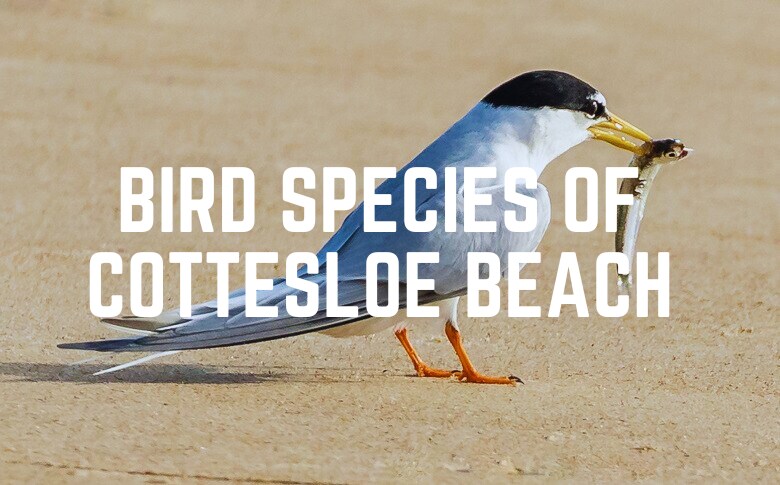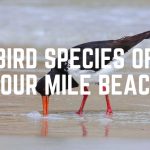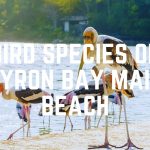Bird Species Of Cottesloe Beach, situated in Western Australia, is frequented by various bird species. It can include the graceful seagulls that glide along the coastline, scavenging for food near the shore.
Cottesloe Beach often hosts sightings of the pied cormorants, known for their sleek black bodies and impressive diving capabilities as they hunt for fish underwater.
Beachgoers may also spot colorful rainbow lorikeets flitting through nearby trees or hovering around park areas, Cottesloe Beach adding vibrant hues to the coastal landscape with their playful antics.
Bird Species Found At Cottesloe Beach Include
- Silver Gull (Chroicocephalus novaehollandiae)
- Sooty Oystercatcher (Haematopus fuliginosus)
- Red-capped Plover (Charadrius ruficapillus)
- Pacific Gull (Larus pacificus)
- Little Pied Cormorant (Microcarbo melanoleucos)
- Pied Cormorant (Phalacrocorax varius)
- Crested Tern (Thalasseus bergii)
- Australian Pied Oystercatcher (Haematopus longirostris)
- Australian Pelican (Pelecanus conspicillatus)
- Silvereye (Zosterops lateralis)
Silver Gull (Chroicocephalus novaehollandiae)
Commonly sighted, these gulls are small with silver-gray and white plumage, often found near the shoreline scavenging for food.
Sooty Oystercatcher (Haematopus fuliginosus)
Their black plumage contrasts against the sand, these oystercatchers use their long orange bills to forage for mollusks along the beach.
Red-capped Plover (Charadrius ruficapillus)
Recognizable by their red cap Cottesloe Beach small plovers are often seen running along the beach, foraging for insects. Charadrius ruficapillus is a small shorebird with a rusty-red cap, found on sandy beaches. They dart along the shoreline, nesting in scrapes on the sand and vigilant in protecting their territory.
Pacific Gull (Larus pacificus)
With striking black wings and white bodies Cottesloe Beach large gulls are sometimes seen scavenging along the coast. It boasts a mottled appearance, a large size, and a strong bill. Often seen foraging along shorelines. It is distinct from smaller gulls due to its size and powerful build.
Little Pied Cormorant (Microcarbo melanoleucos)
The Little Pied Cormorant, a small black-and-white seabird, boasts a slender body, and pied plumage. Often seen near freshwater or coastal areas, it dives skillfully for fish and displays a charming habit of perching with wings spread to dry after swimming.
Pied Cormorant (Phalacrocorax varius)
Larger than the little pied cormorant, these birds also dive for fish and can be spotted drying their wings on rocks. The Pied Cormorant, a sleek black seabird with white patches on its flanks and throat, dives skillfully for fish, using its hooked bill and webbed feet, often seen perched with wings spread to dry after diving.
Crested Tern (Thalasseus bergii)
With a shaggy crest during the breeding season, The Crested Tern, Thalasseus bergii, flaunts a shaggy black crest during breeding, diving swiftly into waters for fish. Their slender built agile flight makes them striking seabirds along Byron Bay Main Beach. These elegant terns dive into the water to catch fish.
Australian Pied Oystercatcher (Haematopus longirostris)
The Australian Pied Oystercatcher is a striking shorebird with bold black and white plumage, a long orange-red bill, and vibrant pink legs. These oystercatchers have distinct black and white plumage with a long, bright orange bill for finding prey Often seen along coastlines. It can forage for mollusks and crustaceans on sandy or rocky shores, emitting distinctive piping calls
Australian Pelican (Pelecanus conspicillatus)
Large with distinctive pouches, these pelicans soar above the coastline and often float on the water’s surface. It has a massive pink bill and striking black-and-white plumage. Known for its impressive wingspan and adept fishing skills, it’s often seen gliding gracefully above water bodies in search of fish to scoop up in its pouch-like bill.
Silvereye (Zosterops lateralis)
These small, greenish birds with white rings around their eyes flit around trees and bushes near the beach. The Silvereye, also known as the Waxeye, is a small, lively passerine bird with olive-green plumage, a distinct white eye ring, and a sweet, melodious song.
Frequently Asked Questions (FAQs)
Q: What bird species can I expect to see at Cottesloe Beach?
Cottesloe Beach hosts a variety of seabirds and shorebirds such as Silver Gulls, Crested Terns, Pied Oystercatchers, Pacific Gulls, and Sooty Oystercatchers.
Q: When is the best time to spot these birds at Cottesloe Beach?
Early mornings or late afternoons are typically the best times for birdwatching at Cottesloe Beach when the tide is low and birds are actively foraging along the shoreline.
Q: Can I feed the birds at Cottesloe Beach?
It can disrupt their natural feeding behaviors and diet. Feeding them human food can also be harmful to their health.
Q: Are there any particular conservation efforts in place for the bird species at Cottesloe Beach?
Various conservation initiatives aim to protect the habitat and species at Cottesloe Beach, moreover, including monitoring nesting sites, habitat restoration, and educational programs to raise awareness about the importance of preserving these birds and their environment.



Of course, the best comments for a travel blog often focus on personal experiences, captivating descriptions,
Wow, your vivid descriptions and breathtaking photos make me feel like I’m right there experiencing it all! Adding this to my bucket list for sure.